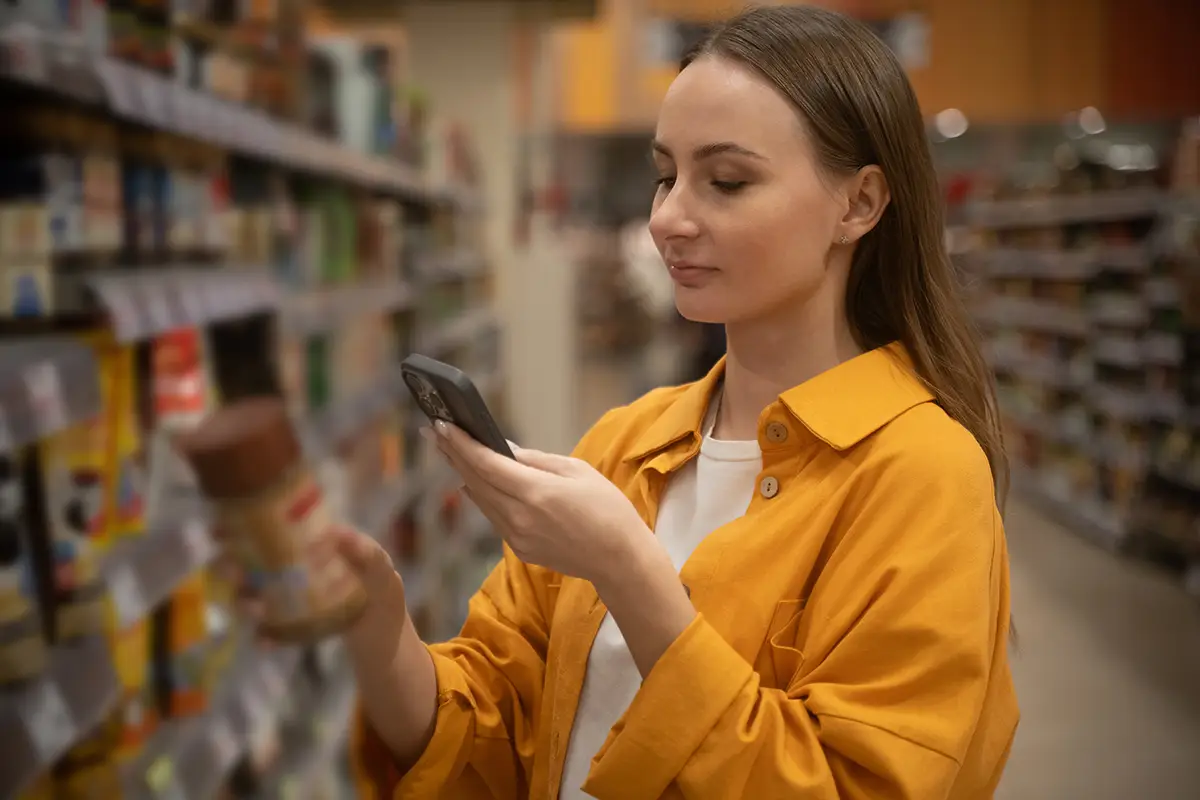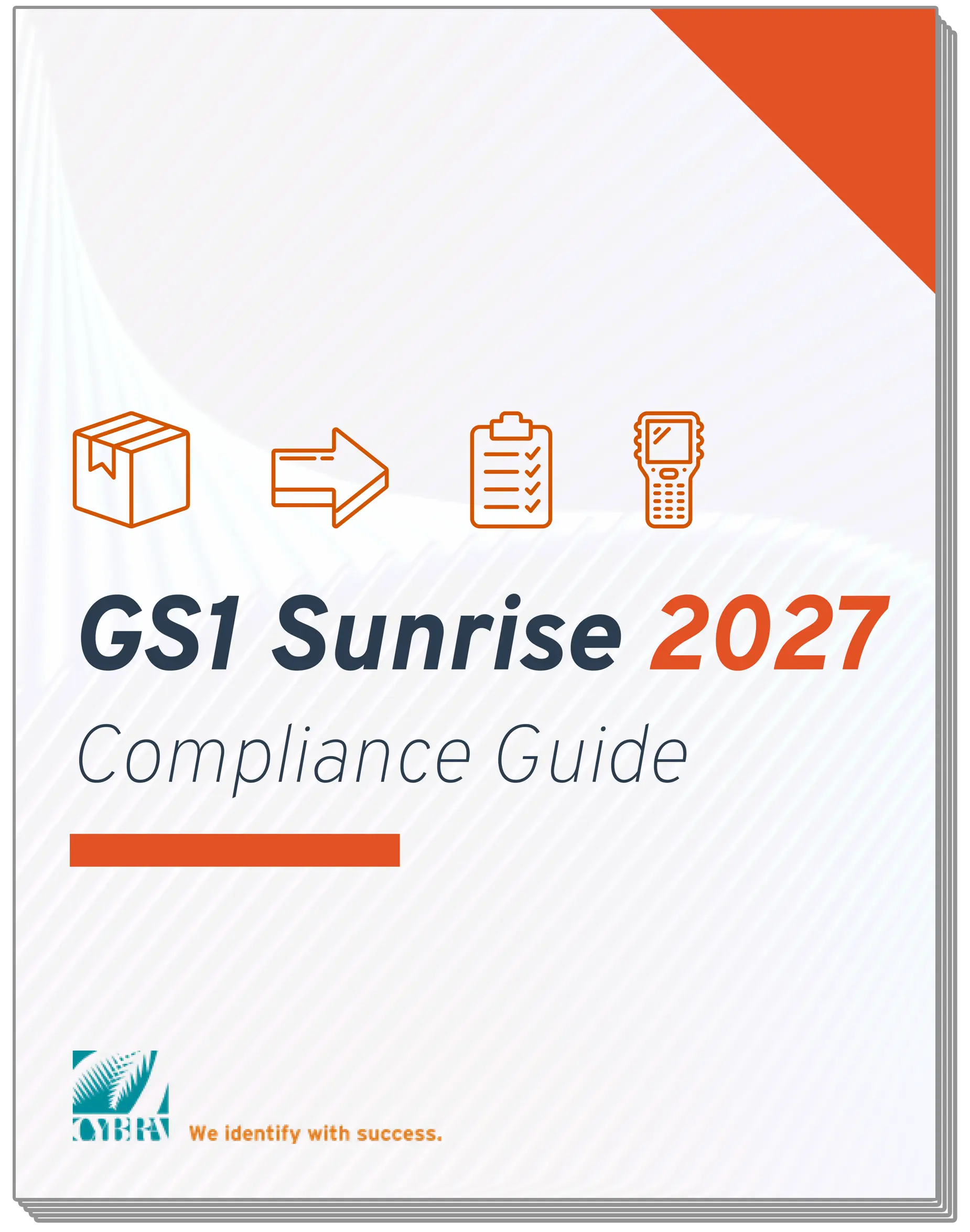
GS1 Digital Link is a GS1 standard that turns product identifiers (like GTINs) into web-addresses so the same 2D code can serve cash registers, scanners, and smartphones.It defines a URL format for GS1 keys (GTIN, GLN, SSCC, etc.) and attributes (lot, serial, expiry). Software can parse those identifiers and, optionally, resolve the link to human- or machine-readable resources.
How GS1 Digital Links Work
GS1 Digital Link turns a product identifier into a single, web-addressable URI that can carry structured attributes.
When scanned, that URI is resolved dynamically so the same barcode can route POS systems to a price lookup, supply-chain systems to traceability records, or consumers to rich product content — all without reprinting labels. It’s a standards-based, device-agnostic way to make product data discoverable, updatable, and interoperable across partners.
- A GS1 Digital Link URI carries the product ID and optional attributes (batch, lot, expiry, serial, etc.).
- You print that URI inside a 2D barcode on the package or label.
- Scanners or phones hit a resolver, which directs them to the best destination—price/lookup at POS, traceability data in the supply chain, or rich product content for shoppers.
Why it Matters
One 2D code (QR or GS1 DataMatrix) carrying a GS1 Digital Link can do the job of many: it powers POS price lookups, inventory and recall workflows, authentication and traceability, plus rich consumer experiences like ingredients, allergens, how-tos, and recycling info—all from the same symbol.
That’s why Sunrise 2027 matters: by late 2027, POS systems should read and process 2D barcodes. GS1 Digital Link is the web-enabled data structure inside those codes, so as you dual-mark packs (1D + 2D) during the transition and ultimately move to a single 2D symbol, you unlock cleaner packaging, fewer labels, and always-up-to-date product data for every audience—from checkout and warehouse teams to shoppers on their phones.

GS1 Sunrise 2027 Compliance Guide
In this guide, we’ll break down exactly what GS1 Sunrise 2027 means for your business, how 2D barcode compliance works, and how you can get ready without overhauling your entire labeling setup.
GS1 Sunrise 2027
Sunrise 2027 is the retail industry’s target that by the end of 2027 all POS systems can read and process 2D barcodes alongside today’s 1D UPC/EAN—an industry goal also described as “Ambition 2027.” It’s backed by a global industry endorsement, with pilots already running in 48 countries (~88% of global GDP) per GS1 US.
During the transition, brands are encouraged to dual-mark packs (1D + 2D) before moving to a single 2D symbol that can carry a GS1 Digital Link and route scans via a GS1-conformant resolver.
For technical rollout details, see GS1’s 2D at Retail POS Implementation Guideline.
Getting Started Using Digital Links
Digital Links unlock powerful, multi-audience use cases, but they require coordination. Before you roll them out, validate that your POS/WMS/e-commerce systems can parse GS1 keys, choose a symbol and resolver approach, and set up content governance and pilot tests — then migrate labels while keeping 1D codes for compatibility.
- Pick your 2D symbol (QR or GS1 DataMatrix) and confirm your POS, WMS, and e-commerce systems can parse GS1 Application Identifiers and Digital Link URIs.
- Stand up a resolver (or use a service) so each scan routes to the right destination for each audience.
- Update packaging and labels to include the Digital Link-encoded 2D barcode, while maintaining 1D during the migration.
- Govern the destinations (ingredients, certifications, instructions, recalls) so content stays accurate and useful.

Bottom Line
GS1 Digital Link is the connective tissue of Sunrise 2027, turning 2D barcodes into gateways to product data. Planning your Sunrise roadmap? Start with pilot labels, POS tests, and a resolver strategy to deliver day-one value
MarkMagic from CYBRA helps you move from test to pilot to production—fast. Design dual-marked UPC + 2D (QR or GS1 DataMatrix) labels with GS1 AIs and Digital Link URIs, run POS/WMS parsing tests, and automate printing across thermal or laser devices. With templates, approvals, and version control, you can scale pilots to full rollout confidently. Get compliant, cut label chaos, and go live sooner with MarkMagic.
Better Labeling, Faster Printing.
Ensure every label is accurate, compliant, and printed without delays. Discover how CYBRA’s barcode and printing solutions streamline operations and eliminate errors.















 RFID Cage
RFID Cage